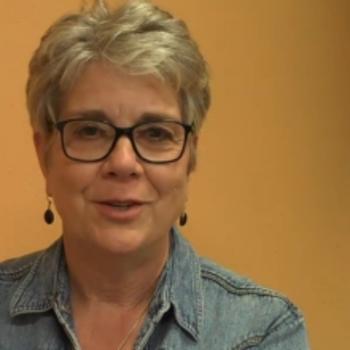Introduction
Wine grapes are a high-value crop with significant economic and social impacts for California, Washington and Oregon. The three states have over 720,000 acres of established wine grapes with more than $70 billion in total economic activity. Unfortunately, these states experience increasingly frequent and lengthy wildfires. The resulting smoke exposure can damage wine grapes. Forest lands carry excessive fuels after more than 150 years of fire suppression. The results are the large and intense fires the West has experienced since the late 20th century.
Prescribed burns reduce the likelihood of intense fires. They differ from wildfires in that their smoke is typically much less intense than wildfire smoke. Yet these necessary fires can expose the high-value wine grape crop to smoke. The exposure of wine grapes to smoke does not automatically negatively impact the crop. However, smoke exposure can cause crop loss and unmarketable wines. Consumers may be unable to find that favorite bottle on the shelf in years after exposure.
The wine and forestry sectors have shared interests and some distinct concerns. The purpose of this publication is to establish communication pathways between the two and help them recognize ways they can work together to protect vineyards while maintaining safe and healthy forests.
What fire planners need to know about wine grapes
Pacific Coast grapevines bear fruit from April to October or November, depending on location and grape variety. The precise fruiting window changes yearly based on seasonal weather variability. The risk of smoke particulate matter uptake increases as the fruit begins to color, a process known as veraison. As little as one hour of dense smoke exposure near or after veraison can negatively impact the grape crop.
The skins of wine grapes are semi-permeable membranes. They permit the passage of some smoke products into the grape cells. In response, the vine metabolizes these products, changing the chemistry of the grape berry. These compounds can cause off-flavors in the resulting wines, making them unmarketable and causing extensive economic loss to the vineyard, winery and related economic sectors.
See resources at the end of this document for greater detail on the impact of wildfire smoke on the wine industry.
Prescribed fire planners can mitigate the impact to grape crops by treating them as a smoke-sensitive resource.
- Choose burn windows during which smoke will disperse away from neighboring vineyards.
- Smoke-reduction practices that decrease the duration of exposure decrease the risk of grape damage.
- Avoid circumstances that will permit the nighttime settling of smoke within vineyards.
- Wine grapes are less susceptible to smoke damage during spring burn windows. When fall burns are necessary near vineyards, consider whether they can be delayed until after grape harvest.
What wine grape growers need to know about prescribed burns
Prescribed burns are conducted by federal agencies, such as the U.S. Forest Service, Bureau of Land Management and National Park Service; tribes for management or cultural reasons; and private landowners. They are a tool land managers use to achieve specific objectives in forests, rangelands and agricultural settings.
- Prescribed fires and forest thinning reduce fuel loads and maintain conditions that mitigate the risk of high-intensity forest wildfires.
- They manage crop residues and renew the productivity of grass and other rangeland plants.
Federal agencies target repeat burns about every seven years, but this varies with ecosystem type and burn objectives. Repeated burn cycles should reduce the smoke production of subsequent burns.
Planning is an essential component of prescribed burns. Plans document desired outcomes, environmental conditions under which the burn may be conducted, resources to be protected, smoke mitigation practices, safety considerations and much more.
Burn windows are periods of weather and fuel moisture conditions that favor the intended outcomes of a prescribed burn. Burn windows typically occur in the spring after snowmelt or cessation of winter rain but before spring green-up. They also occur in the fall once precipitation resumes but before fuel becomes too wet to burn efficiently. Spring burns are often ideal for ecological objectives, but fall burns have a reduced risk of smoldering fires and the potential to develop into wildfires.
Prescribed fires are only lit when the conditions that define the burn window are predictable. These conditions are confirmed the morning of the burn. Ignition of a burn is carefully timed, often starting at midmorning when fine fuels are dry enough to carry fire. The warming atmosphere lofts smoke to relatively high elevations for dispersal, leaving minimal ground-level smoke as the day cools into the evening.
How grape growers and prescribed fire practitioners can work together
Communication is the key to successful collaboration between prescribed burn planners and wine-grape growers. Fire planners consider many values when designing burns, but they may not be aware of smoke’s potential impacts on wine grapes. Wine grape growers may benefit from proactively contacting and building working relationships with prescribed fire planners.
In addition to its use as a forest management tool, fire is also used for pest and weed management in pastures, to rejuvenate rangeland or to promote some specialty crops. If you’re a wine grape grower, ask about your neighbors’ prescribed fire plans. If your neighbor intends to use this tool, talk with them about the potential impacts on your crop before the growing season begins. A relatively straightforward conversation between land managers can shape the development of burn plans.
When timber is harvested, slash-pile burning is almost certain to occur. Oregon law requires harvesting residuals to be managed, and pile burning is often the most cost-effective means. While landowners are encouraged to notify neighbors of upcoming burns, there is no specific requirement that they do so.
If your neighbor is a federal agency, converse with multiple levels of agency personnel to ensure your concerns reach planners and decision-makers. Start by calling the agency’s local office and requesting their prescribed fire planner. Federal prescribed-fire planners work with various resource specialists while developing burn plans. Explain the sensitivity of the grape crop and how burn timing and smoke management can mitigate damage.
Federal agencies generally plan for prescribed fire at the landscape scale, organizing multiple burns in patches across larger areas. Their planning efforts rely on spatial data — locations of key resources they must consider. Providing planners with GIS shapefiles of your vineyards or pointing them to up-to-date GIS resources will help ensure your grape crops are considered as prescribed fire plans are developed.
Direct, proactive communication can protect your assets if neighbors use prescribed burns as a management tool.
Taking communication to a higher level
Prescribed fire councils collaboratively promote the responsible use of prescribed fire as a tool to conserve fire-adapted natural ecosystems. The councils are an effective way to reach prescribed fire practitioners and may be an excellent way to share information, communicate concerns and build effective working relationships. Each of the West Coast states has a prescribed fire council.
- Oregon Prescribed Fire Council
- Washington Prescribed Fire Council
- California Prescribed Burn Association
Naturally occurring fires have shaped western ecosystems for thousands of years. Current forest conditions and climate trends indicate the ongoing and increasing likelihood of wildfires. This means that our region will continue to experience smoke. Prescribed fire is an effective tool to mitigate the risk of intense wildfire. It can be implemented to mitigate smoke’s impacts on grapes, provided prescribed fire planners know how grapes are affected, when they are most susceptible and where vineyards are located. Investing now in working relationships between wine-grape growers and prescribed fire professionals will create effective partnerships in wildfire risk reduction and smoke mitigation.
Resources
Extension publications
Washington State University Tri-Cities. 2021. WSU researchers part of $7.6 million grant to study impact of smoke on grapes and wine
Adlam, Christopher and Carrie Berger. 2022. Prescribed Fire: Why We Burn (EM 9339). Oregon State University Extension Service. Corvallis, OR.
Adlam, Christopher, Ariel Cowan and Carrie Berger. 2023. Prescribed Fire Basics: Monitoring and Evaluation (EM 9388). Oregon State University Extension Service, Corvallis, OR.
Berger, Carrie, Stephen A. Fitzgerald, Daniel Leavell and Janice Peterson. 2018. Fire FAQs—Air quality impacts from prescribed fire and wildfire: How do they compare? (EM 9203). Oregon State University Extension Service. Corvallis, OR.
Cowan, Ariel, Christopher Adlam and Carrie Berger. 2023. Prescribed Fire Basics: Fuels (EM 9386). Oregon State University Extension Service. Corvallis, OR.
Groth, Aaron, Steve Fanis, Emily Jane Davis and Carrie Berger. 2023. Prescribed Fire Basics: Fire Weather (EM 9385). Oregon State University Extension Service. Corvallis, OR.
Murray, Maegan. 2016. Grape vines exposed to smoke to test taint from wildfires. Pullman, WA: Washington State University Extension Service.
Osborne, James and Elizabeth Tomasino. 2019. Impact of Smoke Exposure on Wine (EM 9253). Oregon State University Extension Service. Corvallis, OR.
Smoke Exposure Website. 2016. Washington State University Extension Service. Pullman, WA.
Truscott, Seth. 2022. Wildfire awareness: Forestry scientists share lessons to understand, adapt to realities of fire. Washington State University Extension Service. Pullman, WA.
Weybright, Scott. 2022. Researchers discover compounds contributing to smoke exposure effects in wine and grapes. Washington State University Extension Service. Pullman, WA.
Wine America. Economic Impact of the California Wine Industry in 2022.
Wine America. Oregon Economic Impact Study 2022.
Wine America. Washington Economic Impact Study 2022.
Scientific literature
Ravi, Vikram, Joseph K. Vaughan, Michael P. Wolcott and Brian K. Lamb. 2019. Impacts of prescribed fires and benefits from their reduction for air quality, health, and visibility in the Pacific Northwest of the United States, Journal of the Air & Waste Management Association, 69:3, 289-304.
Work funded by USDA-NIFA-SCRI Competitive Grant #2021-51181-35862




